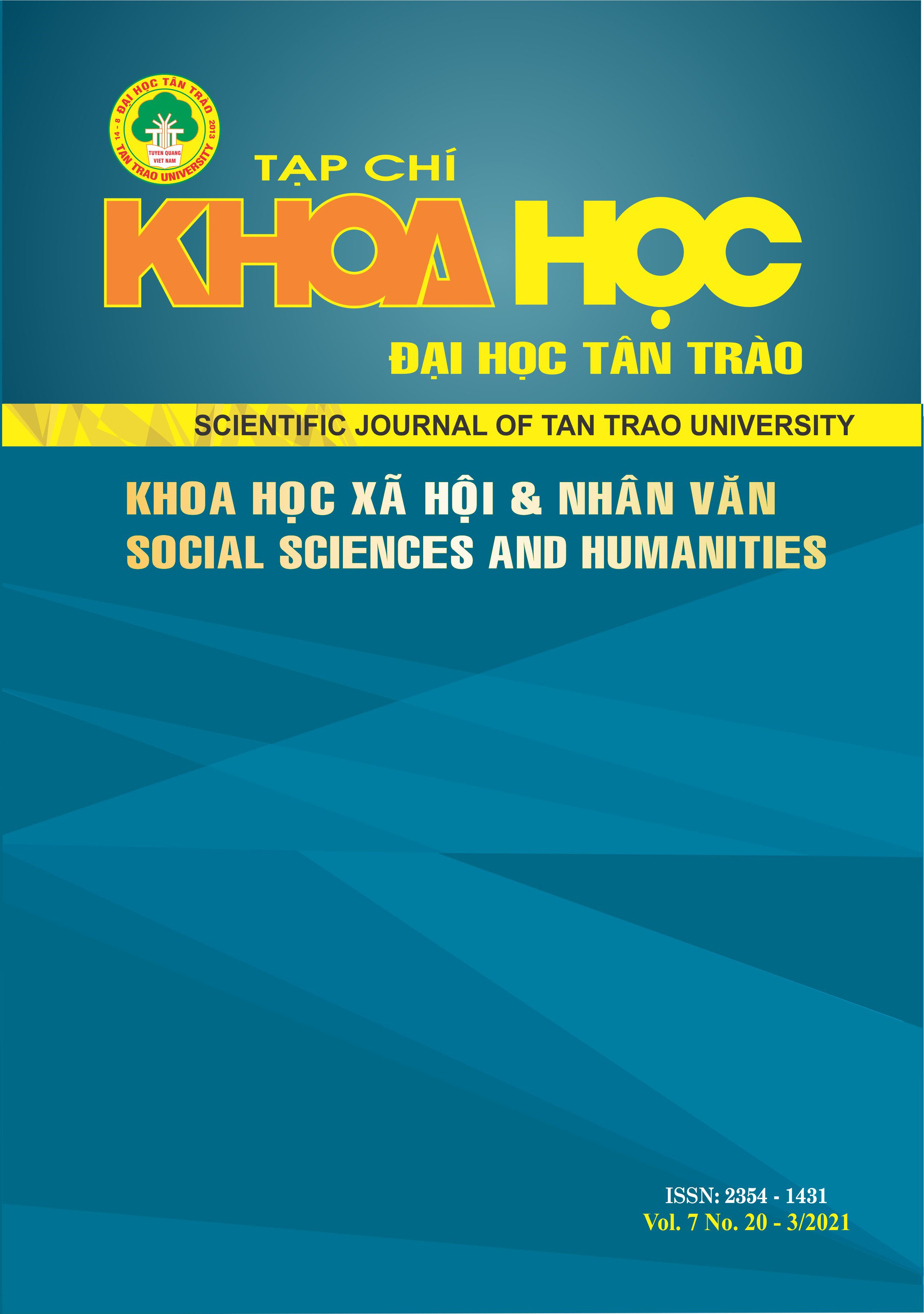BA BÀI DỤ CỦA NGƯỜI PHÁP TRONG BỘ SÁCH “AN NAM SƠ HỌC SỬ LƯỢC”
DOI:
https://doi.org/10.51453/2354-1431/2021/480Từ khóa:
Dụ, ngÆ°á»i Pháp, bá»™ sách An Nam sÆ¡ há»c sá» lượcTóm tắt
An Nam sơ học sử lược安南初学史略 là bộ thông sử viết bằng chữ Hán viết về lịch sử Việt Nam, được chính quyền Pháp đưa vào chương trình cải lương giáo dục lần thứ nhất trên đất An Nam với mục đích tạo nên bước quá độ từ nền giáo dục Hán học cũ sang nền giáo dục Pháp Việt khi người Pháp muốn xác lập chính sách cai trị lâu dài tại Đông Dương. Qua chương trình giáo dục này, mục đích sâu xa của chính quyền thực dân Pháp nhằm muốn tuyên truyền đường lối cai trị, truyền bá tư tưởng thực dân, khuếch trương sức mạnh khoa học, kỹ thuật, quân sự, kinh tế; mặt khác bọn họ lại tìm cách ru ngủ, mua chuộc chính quyền nhà Nguyễn và nhân dân yêu nước người Việt Nam chống lại sự xâm lược và nền đô hộ của họ. Những tư tưởng phản động đó được chính quyền Pháp khéo léo lồng ghép, truyền tải trong các trang sách giáo khoa lịch sử dùng để dạy cho các bậc học phổ thông trên đất nước ta. Quá trình nghiên cứu bộ sách An Nam sơ học sử lược trên đây, chúng tôi phát hiện ra những bài dụ do các ông trùm thực dân viết ra, nội dung đậm sự phản động với đủ các giọng điệu, khi thì dụ dỗ mua chuộc, khi thì dọa nạt dăn đe, có lúc lại hết lời ca ngợi, tán dương mối quan hệ Việt Pháp.
Tải xuống
Tài liệu tham khảo
[1] Anh, N.T (2008). Vietnam under French domination, Literature Publishing House, Ho Chi Minh City.
[2] Bau, P.T. (2006). Vietnamese Education in Early Modern Times, Education Publishing House, Hanoi.
[3] Giap, T.V. (1941). Overview of the system of former competition-examinations in Vietnam (from the beginning to Mau Ngo’s competition-examination in 1918), Khai trí Tiến Đức’s Journal, H.
[4] Nghia, T., Francois Gros (co-editor) (1993). Vietnamese Han-Nom Heritage - primary catalogue, 3 volumes, Social Sciences Publishing House, Hanoi.
[5] Electronic document address:
Tải xuống
Đã Xuất bản
Cách trích dẫn
Số
Chuyên mục
Giấy phép

Tác phẩm này được cấp phép theo Giấy phép Quốc tế Creative Commons Attribution-ShareAlike 4.0 .
Bài báo được xuất bản ở Tạp chí Khoa học Đại học Tân Trào được cấp phép theo giấy phép Ghi công - Chia sẻ tương tự 4.0 Quốc tế (CC BY-SA). Theo đó, các tác giả khác có thể sao chép, chuyển đổi hay phân phối lại các bài báo này với mục đích hợp pháp trên mọi phương tiện, với điều kiện họ trích dẫn tác giả, Tạp chí Khoa học Đại học Tân Trào và đường link đến bản quyền; nêu rõ các thay đổi đã thực hiện và các nghiên cứu đăng lại được tiến hành theo cùng một bản quyền.
Bản quyền bài báo thuộc về các tác giả, không hạn chế số lượng. Tạp chí Khoa học Tân Trào được cấp giấy phép không độc quyền để xuất bản bài báo với tư cách nhà xuất bản nguồn, kèm theo quyền thương mại để in các bài báo cung cấp cho các thư viện và cá nhân.
Mặc dù các điều khoản của giấy phép CC BY-SA không dành cho các tác giả (với tư cách là người giữ bản quyền của bài báo, họ không bị hạn chế về quyền hạn), khi gửi bài tới Tạp chí Khoa học Đại học Tân Trào, tác giả cần đáp ứng quyền của độc giả, và cần cấp quyền cho bên thứ 3 sử dụng bài báo của họ trong phạm vi của giấy phép.






